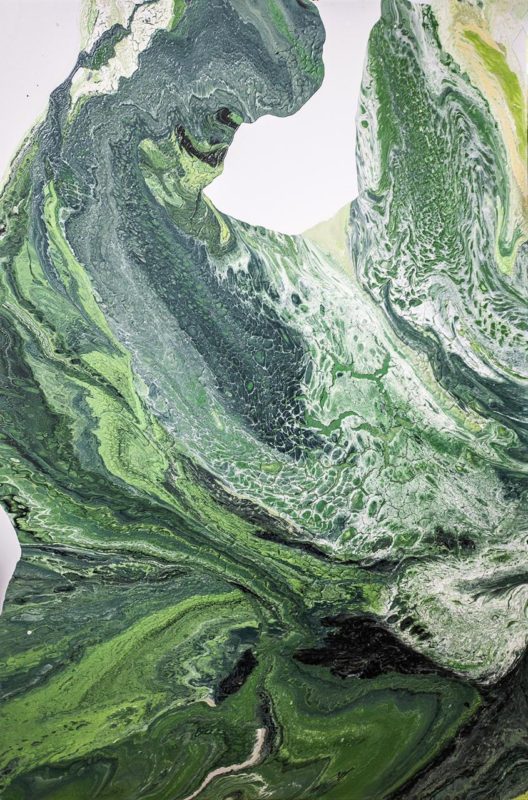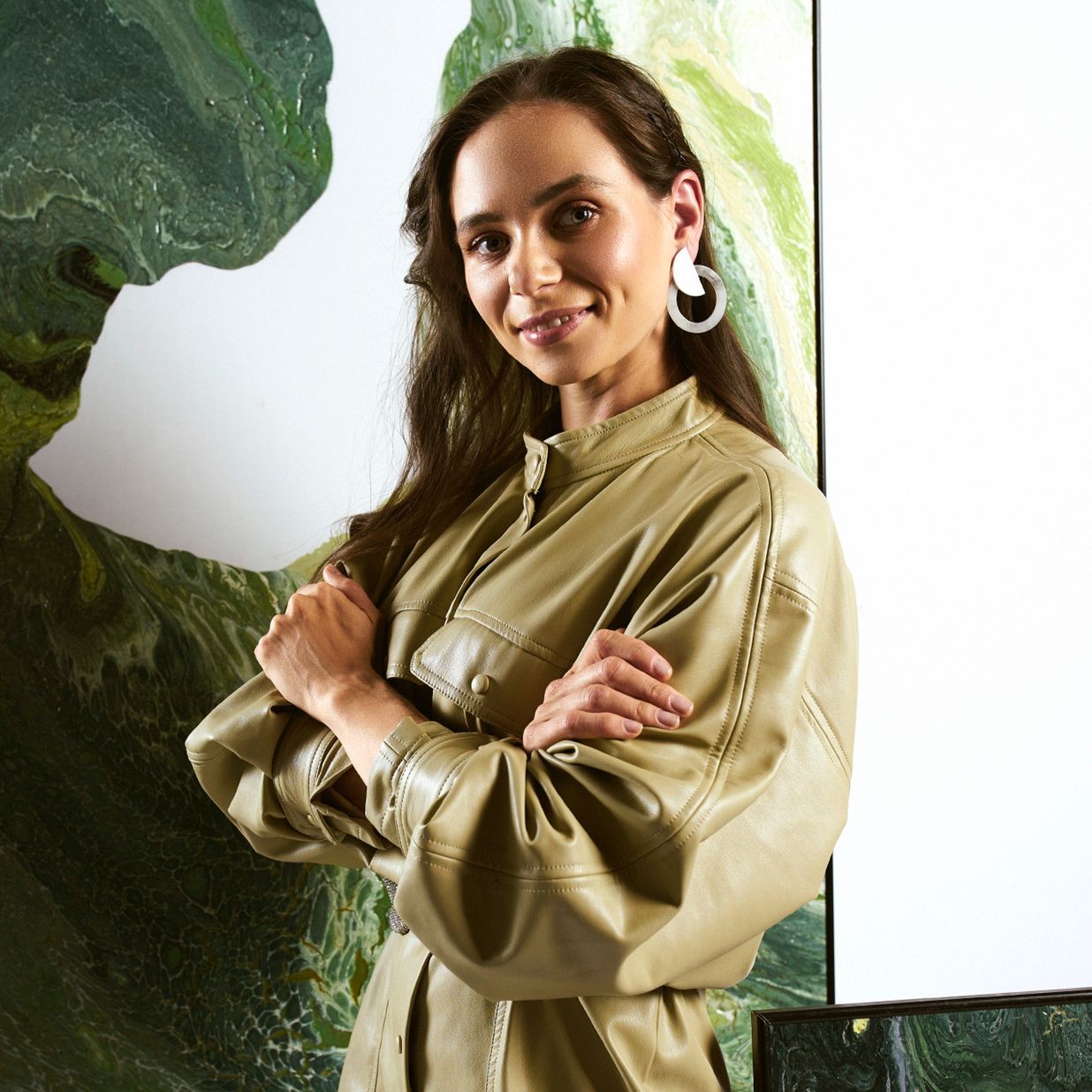Yulia Titova is a young Russian artist who works in the fluid acrylic technique. She creates whimsical monochrome abstractions with nature motifs that look equally impressive in large and small spaces. Fine Art Shippers spoke with Yulia Titova about the intricacies of poured paint, the artist's mindset, and the benefits of art therapy.
Artist Talk: Yulia Titova on the Subtleties of Fluid Acrylic
How did your training shape you as an artist?
Yulia Titova: I attended the Stieglitz Academy in Saint Petersburg, Russia. It is an avant-garde school that teaches you how to think and be creative as an artist, constantly exploring new approaches and solutions. I am very grateful for the education I received there because the unconventional way of thinking and seeing things is what makes a person an artist. Of course, we also had purely academic training, allowing me to master various techniques. That's important, too, because art is impossible without technical craft, but at the end of the day, substance and message count the most.

Your main medium is fluid acrylic. Why did you choose it? What artistic potential does it have for you?
I have been working with fluid acrylic for five years. At first, I was just curious because of the hype around it, and gradually I became more and more attracted to it. I keep exploring the possibilities it opens up. It seems like a simple technique but, actually, depending on the texture, there's a lot to play with. It seems uncontrollable, but in fact, there are many moments that you can anticipate. You can make it more fluid and pour it in different ways and compositions. You can even create some figurative elements.
What I love about fluid acrylic painting is that there is always room for experimentation; I make new discoveries every day. And it's also a meditative process, which is probably the biggest draw for me. When I start pouring, I forget everything and don't even notice how time passes.
Please tell us more about the actual process. How do you place the canvas and how do you pour the paint?
You place the canvas or another material, such as plastic, on a horizontal surface and literally pour buckets of paint on it. Then you have to wait for it to dry, which can take anywhere from several hours to ten days. I love thick textures; when they dry, you can even get craquelure, which looks spectacular. Plastic is best for multi-layered textures, while canvas bends under too much paint, so you always have to be careful of balance.
In 2018, you created a monumental 600-square-foot fluid acrylic painting. What motivated you to do that? Where is this painting now?
It was a project for the Russian edition of the Guinness Book. Unfortunately, I wasn't able to submit the record because the camera I was filming with accidentally stopped without me noticing. Also, there are strict rules about video recordings that must be done in a single shot; pauses and cuts are not allowed. Anyway, I am glad I made that painting, it was a great challenge. Since I don't have a place to keep it, I have been thinking about donating it to a museum. I am trying to figure that out now.

You also teach courses in art therapy. What exactly do you teach your students?
I have two types of classes. One is art therapy with just me, and the other is with a professional psychologist. The sole act of creating art allows you to let your emotions out and get a boost of energy. But working with a certified therapist brings even better results. During the session, the therapist gives the participants an exercise, such as painting their fears, and I help them choose the appropriate technique. Thus, at the end of the class, the participants not only pinpoint and articulate a problem but also take the first step toward its solution by visualizing it. So when they return to their everyday life, they do not start from scratch but take the second, third, or fourth step.
What art shipping challenges have you encountered in your work?
The professional transportation of art is extremely important. For example, my plastic paintings can only be shipped in wooden crates; otherwise, the acrylic layer would be damaged. Of course, this makes transportation more expensive, but you can not skimp on the safety of the artwork. Recently, I have been thinking about making more smaller paintings on canvas, since they can be shipped in tubes. But I love large-scale plastic works and will definitely continue to do them. After all, there are always customers who want large paintings for their homes or offices. So the cost of shipping art is a small price to pay to do what you love and share it with others.
Photo courtesy of Yulia Titova
